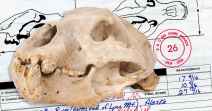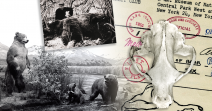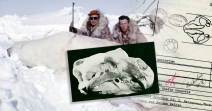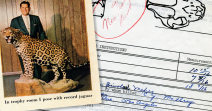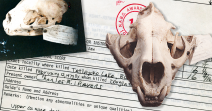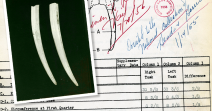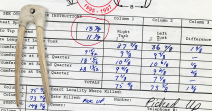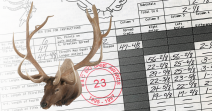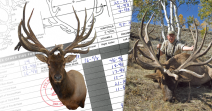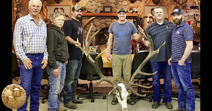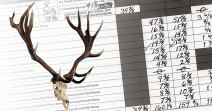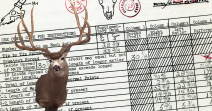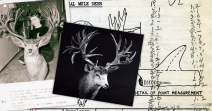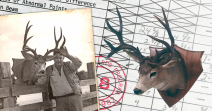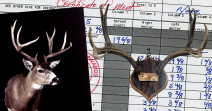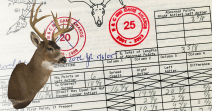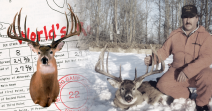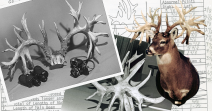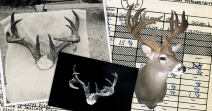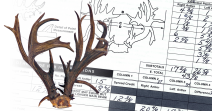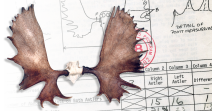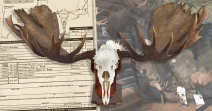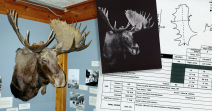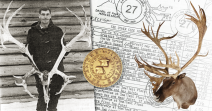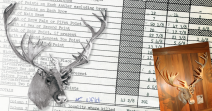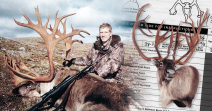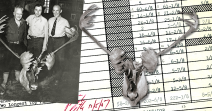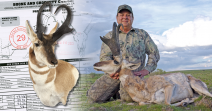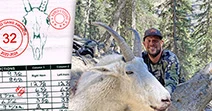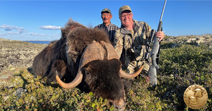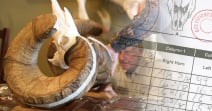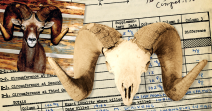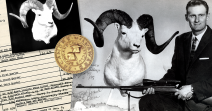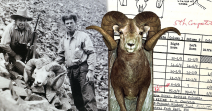B&C World's Record Gallery
We all know there is more more to hunting and conservation than the final score of a big game trophy. However, it is important to take a look at the history of records keeping and celebrate those big game trophies that hold the top spot in their respective categories. These records are part of a large data set that measures conservation success.
Below is the complete gallery of all of Boone and Crockett Club's current World's Records. Click to read the story about how each trophy became the Number One in its category.
Looking to dig deeper into our data?
Visit Big Game Records LIVE
Interested in State Big Game Records?
View B&C's Big Game State Records
Measuring big game animals and publishing those records began more than a century ago with the release of a book in 1892 by Rowland Ward, Ltd., titled Records of Big Game. This book established the first benchmarks for what constituted a trophy. It did not glorify the hunter or the means by which the animal was taken. The Rowland Ward book focused on outstanding trophies from around the world with minimal attention paid to the magnificent North American trophies, as the cost of sending these new world trophies across the Atlantic Ocean for official measurement and possible publication was significant.
Boone and Crockett Club’s involvement with records keeping actually goes all the way back to its very roots. Theodore Roosevelt, George Bird Grinnell, and Archibald Rogers, all founding fathers of B&C served as Competition Judges for the first-ever Sportsman’s Exposition held at Madison Square Garden in 1895, which became an annual event.
In 1902, Roosevelt, Rogers, and Caspar Whitney were appointed by the Club’s board of directors to a committee assigned the task of creating a “standard” scoring procedure for native North American big game. In 1906 Professional B&C member James H. Kidder, chairman of the Committee on Big Game Measurements, was published. This leather-bound, pocket-sized book titled, Big Game Measurements: Game Book of the Boone and Crockett Club. This early Club scoring manual detailed a “standard” but inadequate procedure for measuring 17 categories of big game.
In 1932, Prentiss N. Gray, a long-time Club member, authored the Club’s first big-game records book titled, Records of North American Big Game. It was published under the auspices of the National Collection of Heads and Horns, New York Zoological Society. The measurements were quite simple, the length of skull, or the longer antler or horn, plus a basal circumference.
In 1949, Samuel B. Webb, well-known to major Club members and a close friend of both Grancel Fitz and Dr. James L. Clark, was chosen to chair a special committee of the Club to devise an equitable, objective measurement system for native North American big game. In addition to Webb, Fitz, and Clark, the committee members included Dr. Harold E. Anthony, Milford Baker, and Frederick K. Barbour. All were experienced big game hunters with strong interest in giving recognition to exceptional big game trophies. Dr. Anthony was an Associate Curator at the American Museum of Natural History in New York City. The committee worked during the year to arrive at the system adopted by the Boone and Crockett Club in 1950.
The scoring system developed by Boone and Crockett Club members over the years with extensive input from wildlife experts across North America, is basically the same today as it was in 1950, with a limited number of changes and improvements in the precise methodology. Improvements are especially made when new scoring situations are encountered that have never before been seen.
The Importance of Records in Big Game Management
When you enter your trophy into the Boone and Crockett system, you aren’t just honoring the animal and its habitat. You are participating in a data collection system that started in the 1920s and was refined by Club members in 1950.
Today, there are nearly 60,000 trophy records. By establishing a records database more than 70 years ago, the Boone and Crockett Club established a scientific baseline from which researchers can use to study wildlife management. If you’re still on the fence about entering your trophy, we encourage you to read Why Should I Bother to Enter My Trophy. To the best of our ability, we ensure that the trophies entered into the records were taken in accordance with the tenets of fair chase ethics. Despite what some may think, the Boone and Crockett records are not about a name or a score in a book—because in the end, there’s so much more to the score.



